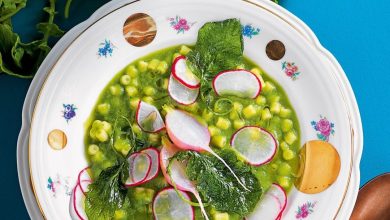Rosewater Infused 17th Century Cheesecake
17th Century Cheesecake Recipe
Introduction
Step back in time with this unique 17th Century Cheesecake recipe, sourced from historical cookbooks where flavors were simpler yet incredibly distinct. This cheesecake, unlike its modern counterparts, features rosewater as a key ingredient, transforming its taste profile into something truly extraordinary. Perfect for those seeking a dessert that’s both a journey into culinary history and a delightful surprise for the palate.
Recipe Details
- Cook Time: 1 hour
- Prep Time: 5 minutes
- Total Time: 1 hour 5 minutes
- Yield: 1 cheesecake
- Category: Cheesecake
- Keywords: Dessert, Cheese, European, Potluck, Weeknight, Oven, < 4 Hours, Easy
Ingredients
- Rosewater
- 1/2 cup currants
- 3 tbsp butter
- 2 tbsp sugar
- 3 egg yolks
- 3 oz cheese curd (or ricotta cheese as an alternative)
- 3 dashes of nutmeg
- Dash of mace (for dusting, optional)
Nutritional Information (per serving)
- Calories: 159.2
- Fat: 13.5g
- Saturated Fat: 8g
- Cholesterol: 124.9mg
- Sodium: 85.6mg
- Carbohydrates: 8.8g
- Fiber: 0.2g
- Sugar: 8.4g
- Protein: 1.5g
Instructions
-
Prepare the Cheese Curd (if making from scratch):
Related Articles- Note: Ricotta cheese can be used as a substitute if desired. To make cheese curd, follow simple instructions to curdle milk and strain the curds from whey.
-
Prepare the Pastry Shell:
- Preheat your oven to the recommended temperature (180°C or 350°F).
- Line a deep, 9-10 inch pastry shell with short-crust pastry.
- Bake the pastry shell blind for 10-15 minutes until lightly golden. Set aside to cool.
-
Prepare the Filling:
- In a mixing bowl, combine the cheese curd (or ricotta) and softened butter. Blend until smooth and creamy.
-
Incorporate Ingredients:
- Add the egg yolks one at a time, thoroughly incorporating each into the mixture.
-
Flavor Enhancement:
- Stir in the rosewater, sugar, currants, and nutmeg until evenly distributed. The rosewater is a key flavor enhancer, so adjust to taste if necessary.
-
Bake the Cheesecake:
- Pour the prepared filling into the cooled pastry shell immediately after mixing to prevent separation.
- Bake in a moderate oven (Gas Mark 4, 180°C or 350°F) for 30-45 minutes. The cheesecake should rise slightly and achieve a golden hue when ready.
-
Final Touch:
- Once baked, remove the cheesecake from the oven and optionally dust lightly with ground mace for added flavor and visual appeal.
-
Serve and Enjoy:
- Allow the cheesecake to cool slightly before serving. This dessert is best enjoyed fresh, highlighting the unique flavors imparted by the rosewater and traditional ingredients.
Historical Context
This recipe offers a glimpse into the culinary practices of the 17th century, where ingredients like rosewater were commonly used to impart a floral essence to desserts. Unlike modern cheesecakes that rely heavily on cream cheese, this version uses a lighter, curd-based cheese, offering a different texture and flavor profile that reflects the era’s culinary preferences.
Tips and Variations
- Cheese Options: Experiment with different types of curd or cheeses to adjust the richness and texture of the cheesecake.
- Flavor Adaptation: Customize the sweetness by adjusting the sugar content to suit your taste preferences.
- Presentation: Enhance the visual appeal by garnishing with fresh berries or a sprinkle of powdered sugar.
Conclusion
Experience the charm of history through flavors with this 17th Century Cheesecake recipe. Perfect for a special occasion or a culinary adventure, this dessert promises a delightful departure from the ordinary, showcasing how simple ingredients and traditional methods can create something truly extraordinary. Embrace the nostalgia and savor every bite of this unique cheesecake inspired by centuries past.








